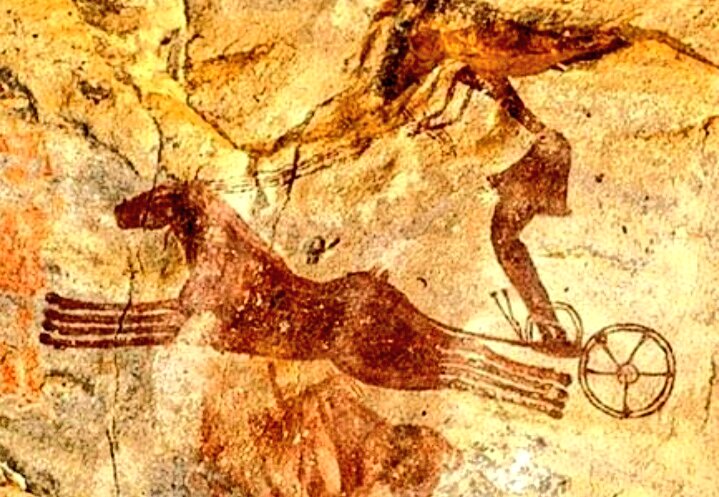Some say that the name Carthage was the punic word for New City, which would seem an apt title, as it was the new city founded by queen Dido of Phoenician Tyre. However, Robert Graves tells us there was once an incarnation of the universal and ancient Great Goddess, whose name was also Car, and who may have pre-dated other goddesses around the Mediterranean. There is evidence that the new city may, indeed, have been named for this very goddess.
The goddess Car of historical record, who ruled the area today comprising Tunisia, Libya, and the Algerian Sahara, was known in more recent times as a lunar goddess. Like most lunar goddesses, her name would describe the car or chariot of the moon that she drove across the night sky, sometimes in brilliant light, sometimes in mysterious darkness. But Graves presents convincing evidence, in The Greek Myths, that in extremely ancient times she was really a solar goddess who was later replaced in various cultures by the likes of Apollo.
Car was originally the goddess who drove the chariot of the sun. And since it is the sun, not the moon, which is related to fire, burning, and the color red, this would be a more logical identification for a phoenician goddess. Phoenix itself means red. And the sacred bird of the Phoenicians, the phoenix, immolates itself on its own funeral pyre, just as the Phoenician queen Dido, founder of Carthage, would end her own life.

For reasons too complex to elaborate here, astrologically and mythologically, the bull has been associated since antiquity with earth and water, while the horse was related to fire and air. The constellation Sagittarius is a fire sign, and according to Oldfield Howey’s landmark work, The Horse in Magic and Myth, this constellation is seen most clearly dominating the night sky in the southeastern United States, where the bones of the Centaur of Volos have most recently come to rest at the University of Tennessee.
Pegasus is only one of the many horses that fly, others being the Celtic Epona, the Cretan Leukippe, the White Horse that founded Prague, Wotan’s horse Sleipnir, as well as the horses that traditionally draw the sun through the skies. From Asia to England, the hobby horse was the traditional vehicle of the shaman through the night sky, evolving in the Middle Ages into the witches’ broomstick.
Both before and since the development of the horse-drawn chariot — 2000 years after the ox-cart, an evolution that can be traced in Stuart Piggott’s Wagon, Chariot and Carriage — horses were often associated with women, from Lady Godiva to the Valkyries. In tribute to the earth goddess, northern kings were reborn from a sacrificed horse, part of the fertility festival. Many British and western European kings were named Marc (horse) or Marches-Marquez (rider). According to Barbara Walker’s The Women’s Encyclopedia of Myths and Secrets, the Slavic horse, interestingly named Volos, was a stallion that was ritually castrated and slaughtered up to 18th century AD, when he was Christianized into a human and named St Vlas.